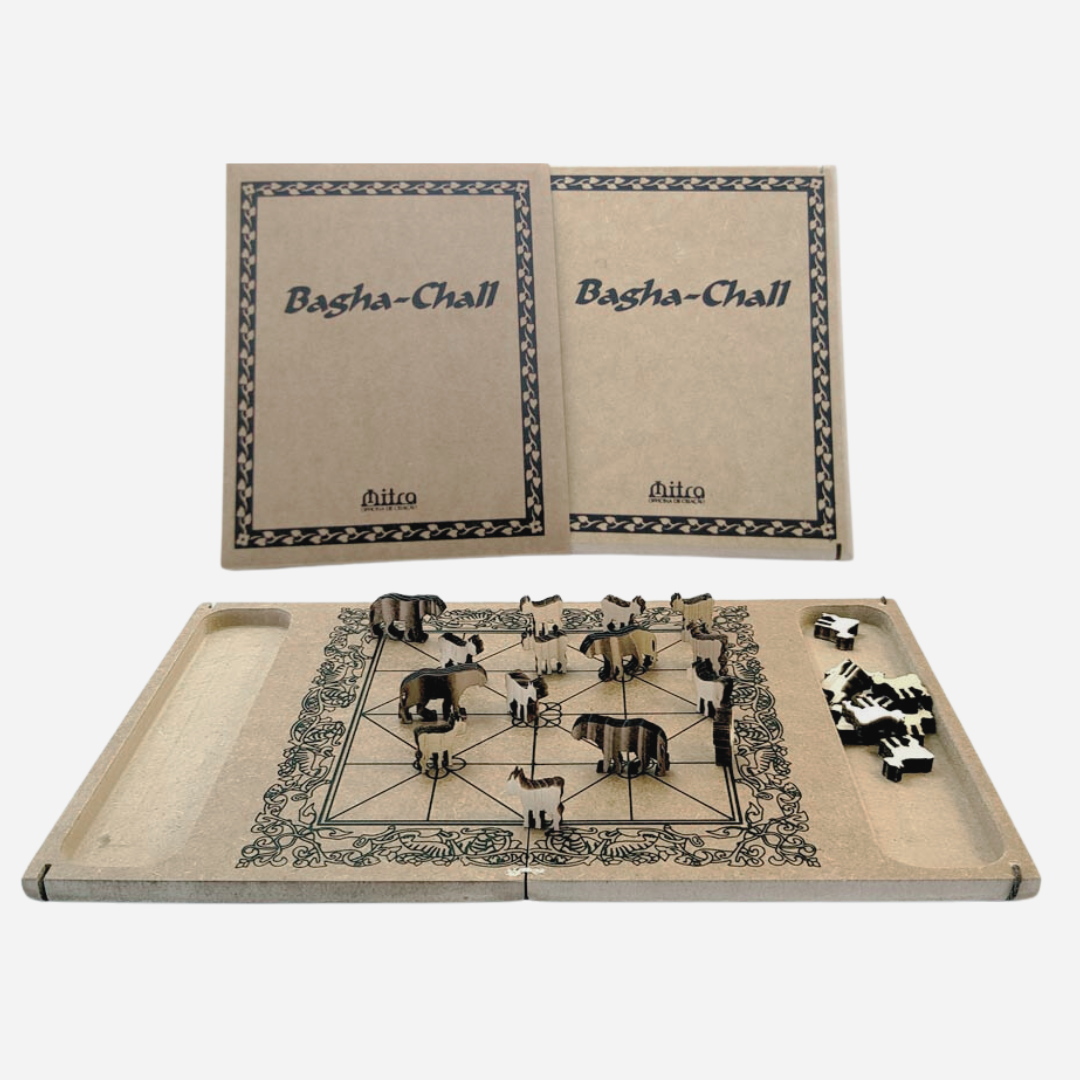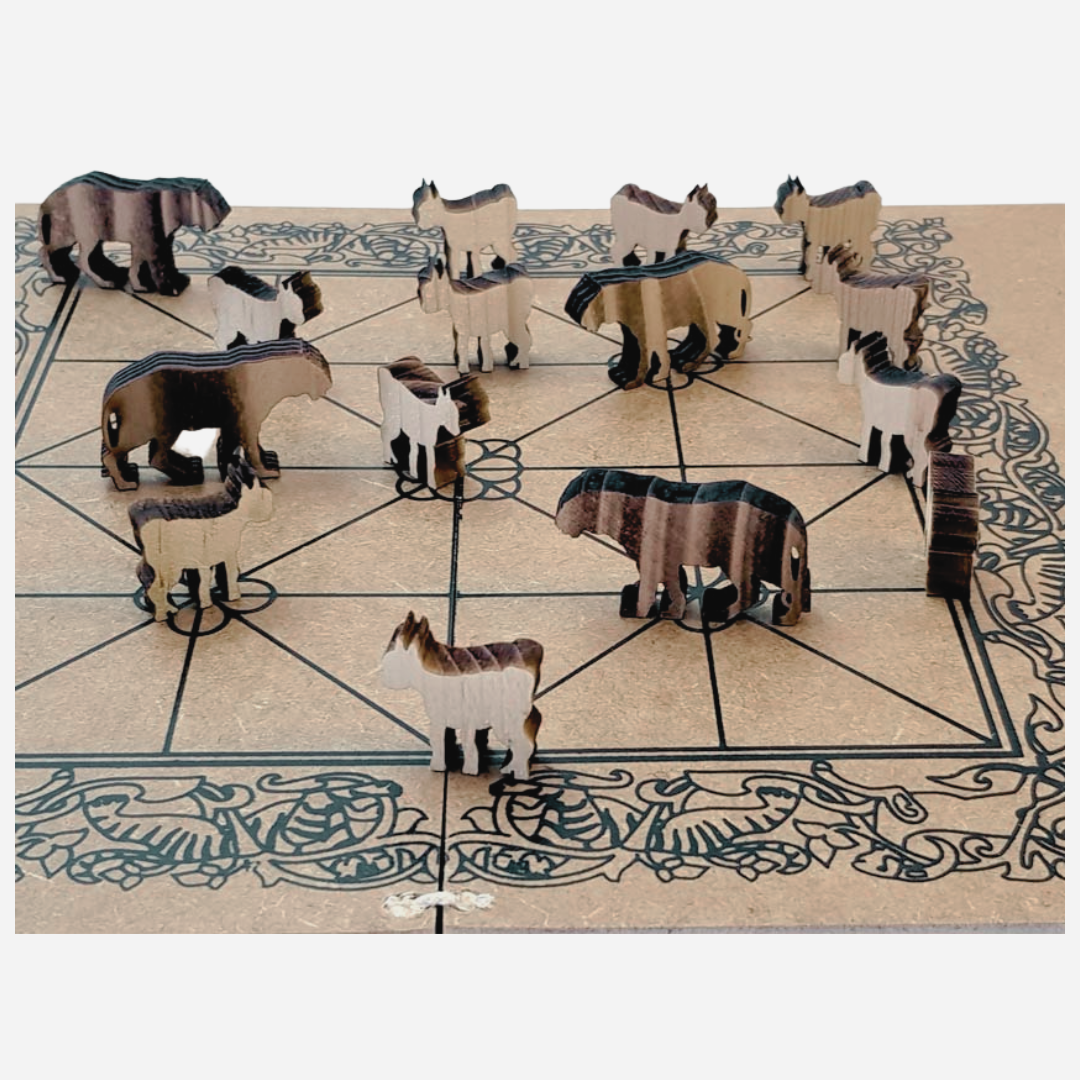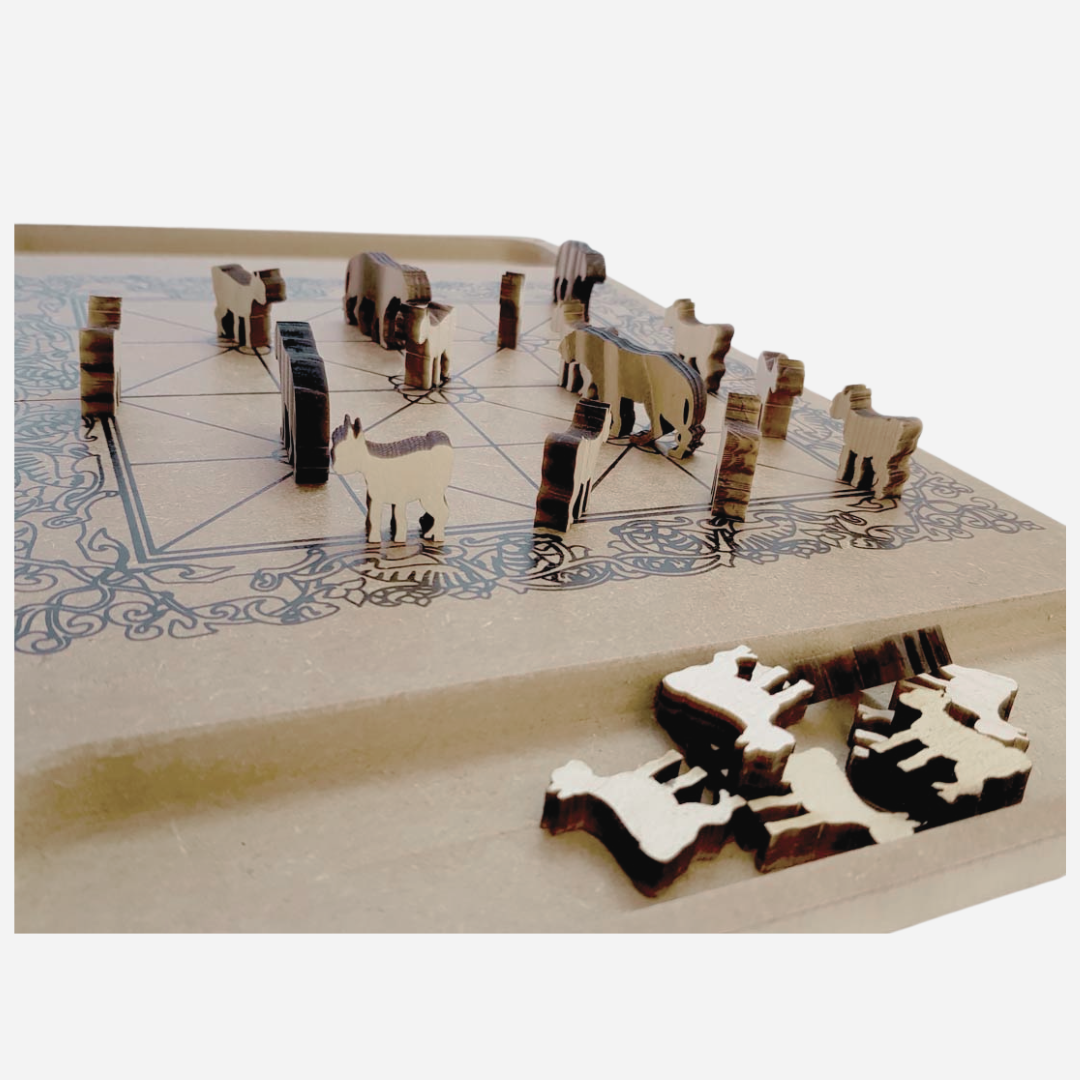Mitra
Bagha-Chall, the national game of Nepal
Bagha-Chall, the national game of Nepal
Low stock
Couldn't load pickup availability
Experience Bagha-Chall, the national game of Nepal that simulates the strategic battle between tigers and goats. Each player has different goals and strategies, resulting in a balanced and engaging game. Playing as a goat will develop the human nature of collectivity and camaraderie, while playing as a tiger will foster the spirit of leadership and strategic vision.
characteristics
characteristics
1 MDF board
4 resin-coated wooden dust tigers
20 resin-coated wood dust goats
booklet with rules and instructions
Recommended for children ages 7 and up
Ideal for 2 players
delivery information
delivery information
Our products are shipped via DHL.
Shipping will be done as soon as possible.
2-5 working days.
Shipping costs will be calculated at checkout.
Mass
Mass
21 x 26 x 3 cm
Application / Instructions
Application / Instructions
Bagha Chall, which means “moving tigers”, is a game for two players that
has its origins in the mountains of Nepal and is considered the national game there. Although it is unclear how old the game really is, it seems to have a rich
history and deep connections to the traditions of Nepalese culture
that go back centuries.
Culture & History
The game is an asymmetric predator and prey game where one player controls 4 tigers while the other player controls 20 goats. It is not difficult to imagine a few herders in the Himalayas watching their herds and in a moment of leisure coming up with a game that directly reflects their everyday experiences protecting their herd from the local apex predator. However, the tiger was not only a fearsome predator, but was also seen in Nepali culture as a symbol of strength,
Majesty and protection revered.
Like many historical games around the world, the beauty of Bagha-Chall lies in its simple complexity. The rules are simple enough for a young child to understand, but with enough depth and strategy that the game can still be played on street corners today, engaging in an activity that has been enjoyed for decades.
Unfortunately, most young people in Nepal have lost interest in playing these types of games and there is a real possibility that it will be lost in history.
That is why it is so valuable to have these games for
to learn and play ourselves in order to preserve them for future generations.
Set up
The game is played on a grid, with the intersections serving as the squares on which the pieces are played. As mentioned above, one player controls 4 tigers that start in the corner squares, while the other player controls 20 goats that start outside the board. The object of the game is for the tigers to capture at least 5 goats or for the
Goats catch the tigers so that they can no longer move.
placement and movement
The game begins when player one places one of his goats on one of the free intersections. Player two can then respond by pushing a tiger piece to an adjacent intersection.
recordings
Tigers can catch a goat by jumping at it if there is an open intersection behind it. Goats that are eaten are immediately removed from the game. Chain jumps to catch multiple goats are not allowed.
In this example, the goats realize that tigers are being drawn to capture, so they place a block. Unfortunately, tigers can still catch the second abandoned goat that has been separated from the herd.
Phase II
Goats are placed and tigers are moved alternately until all 20 goats are placed.
Goats cannot be moved until all goats have been placed. However, once all goats are placed, Phase II begins and goats can move like the tigers.
Tiger victory
The tigers achieve victory by eating 5 goats. The difficulty can be easily adjusted to suit each player's experience level by increasing or decreasing the number of goats caught between 3 and 7.
goat victory
The goats can achieve victory over the tigers by catching them and preventing the tigers from moving further.
Split
- Fast support for questions
- 30-day return policy
- Fast shipping with DHL






